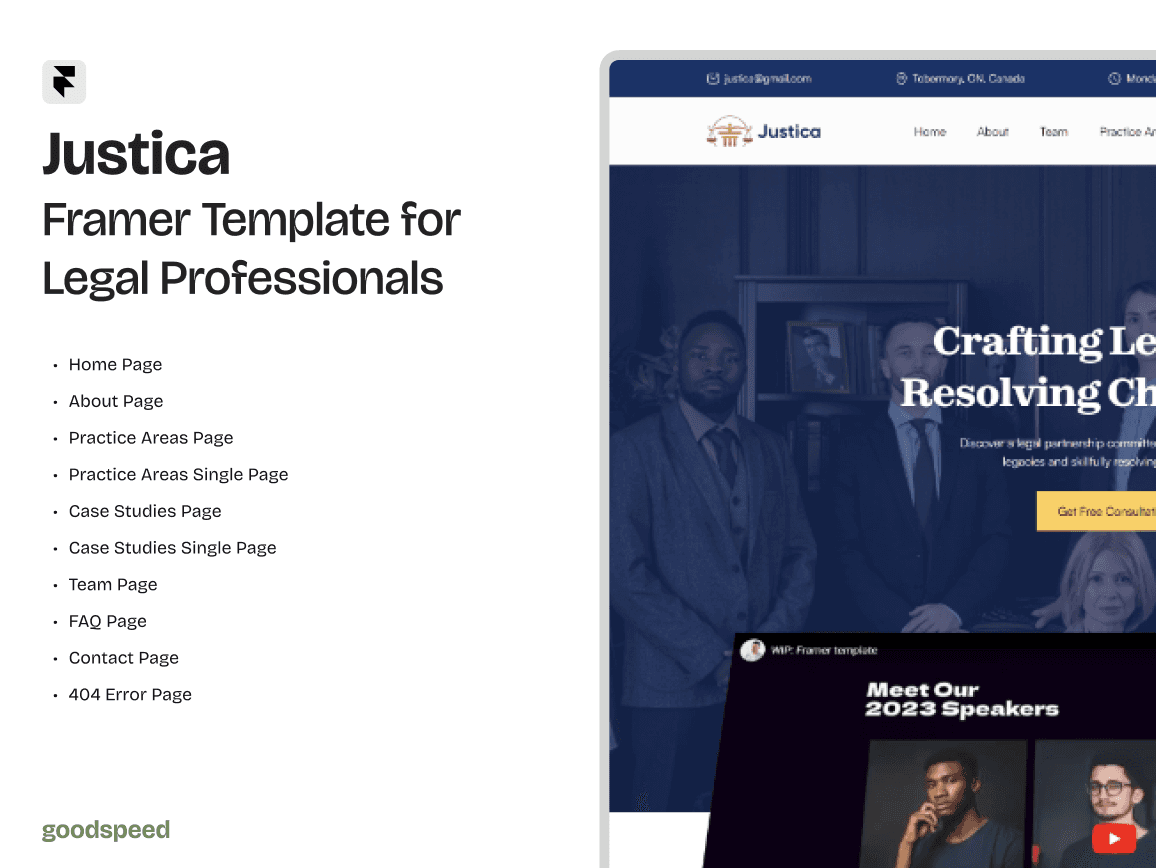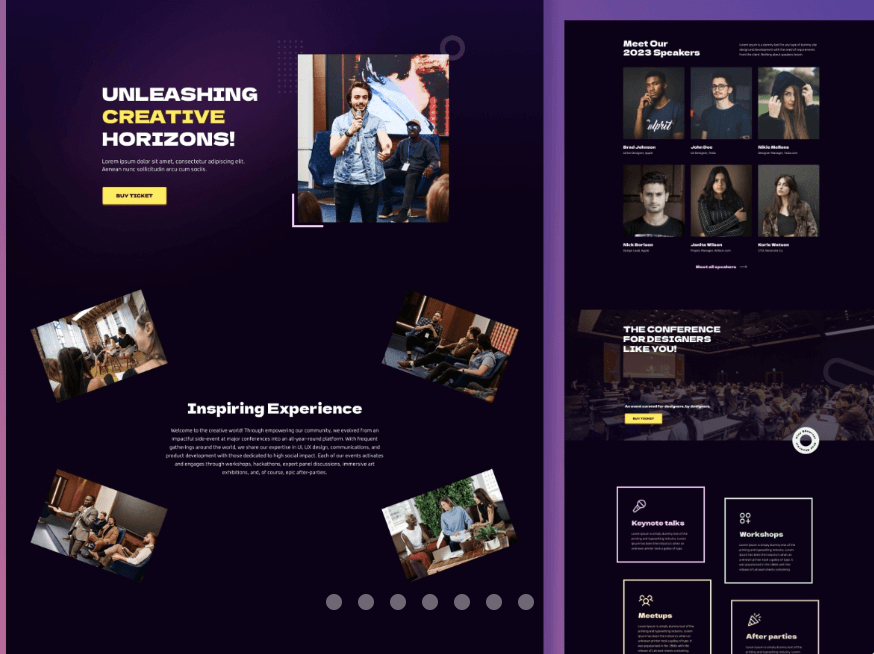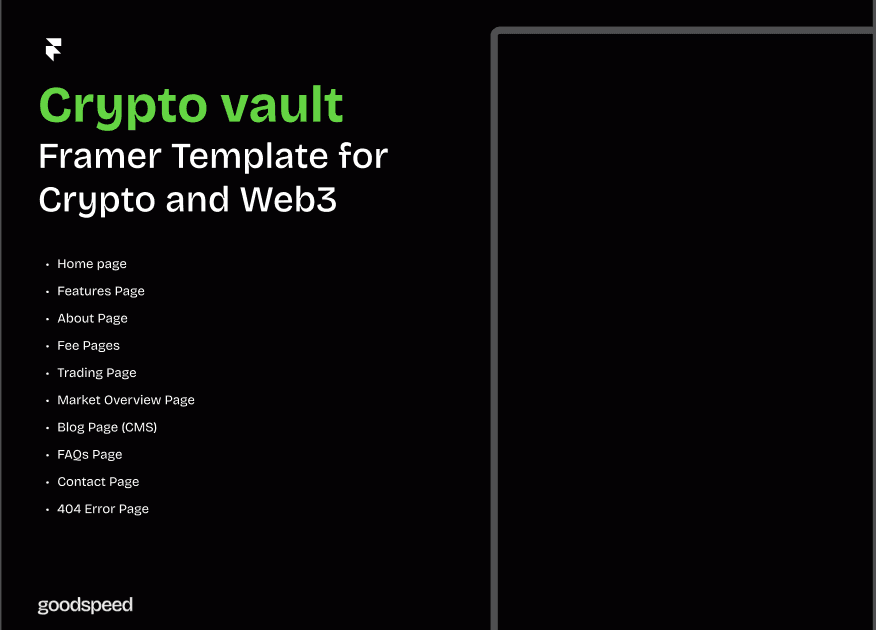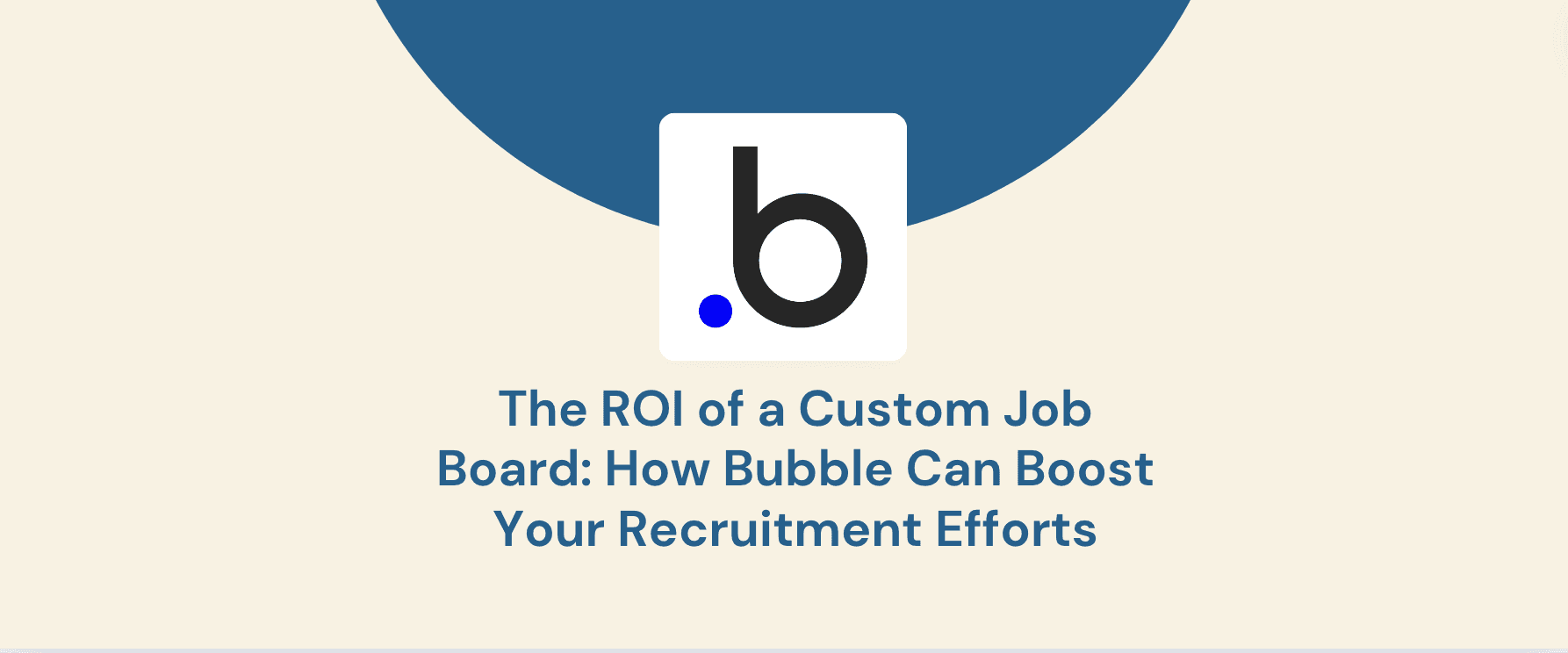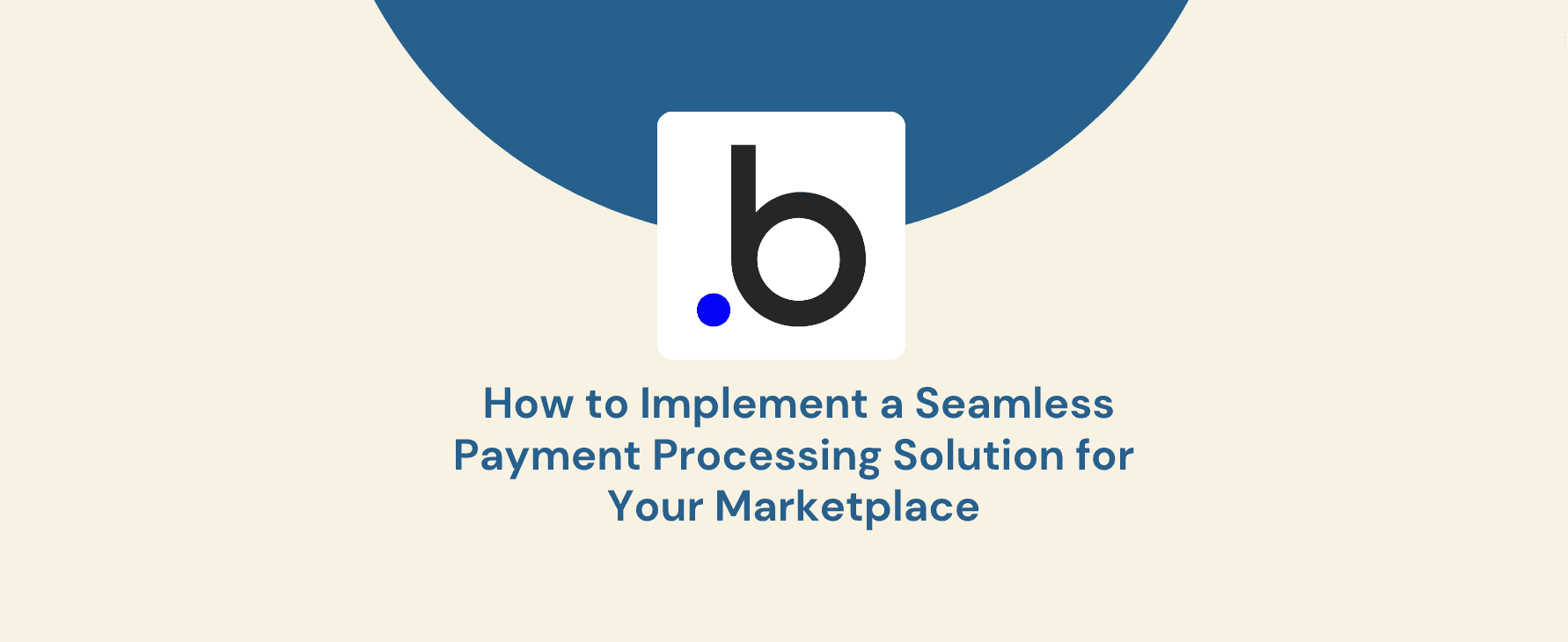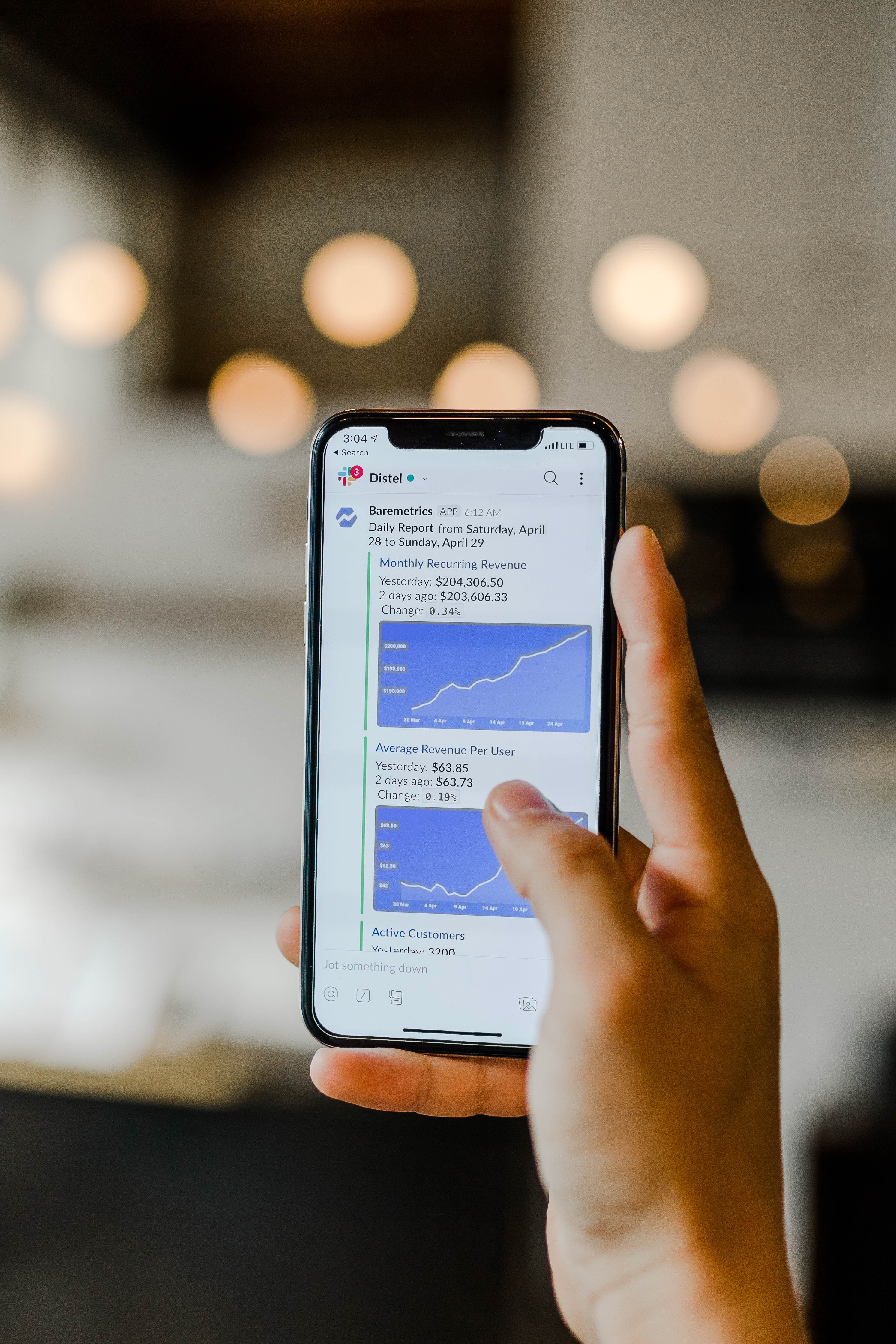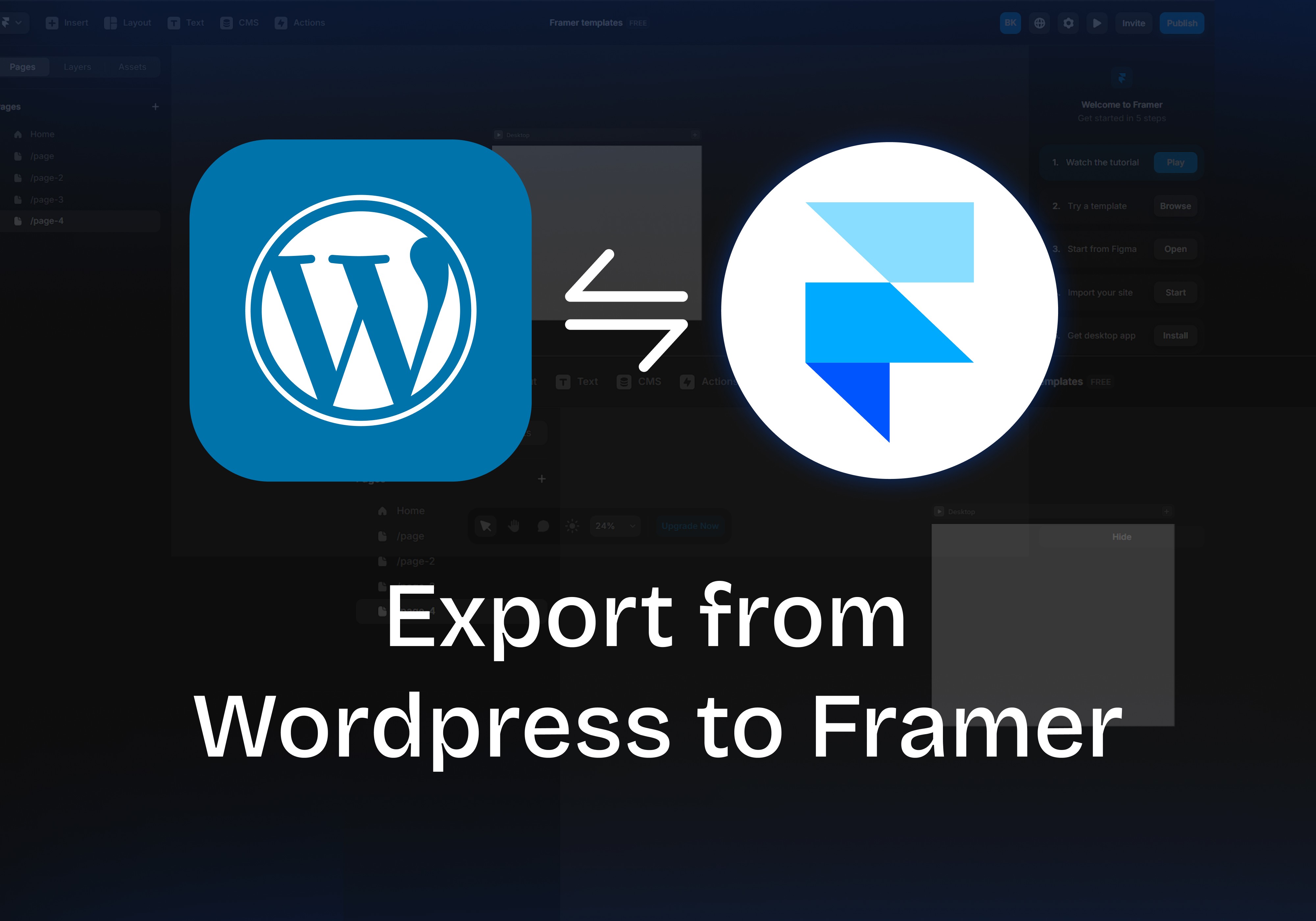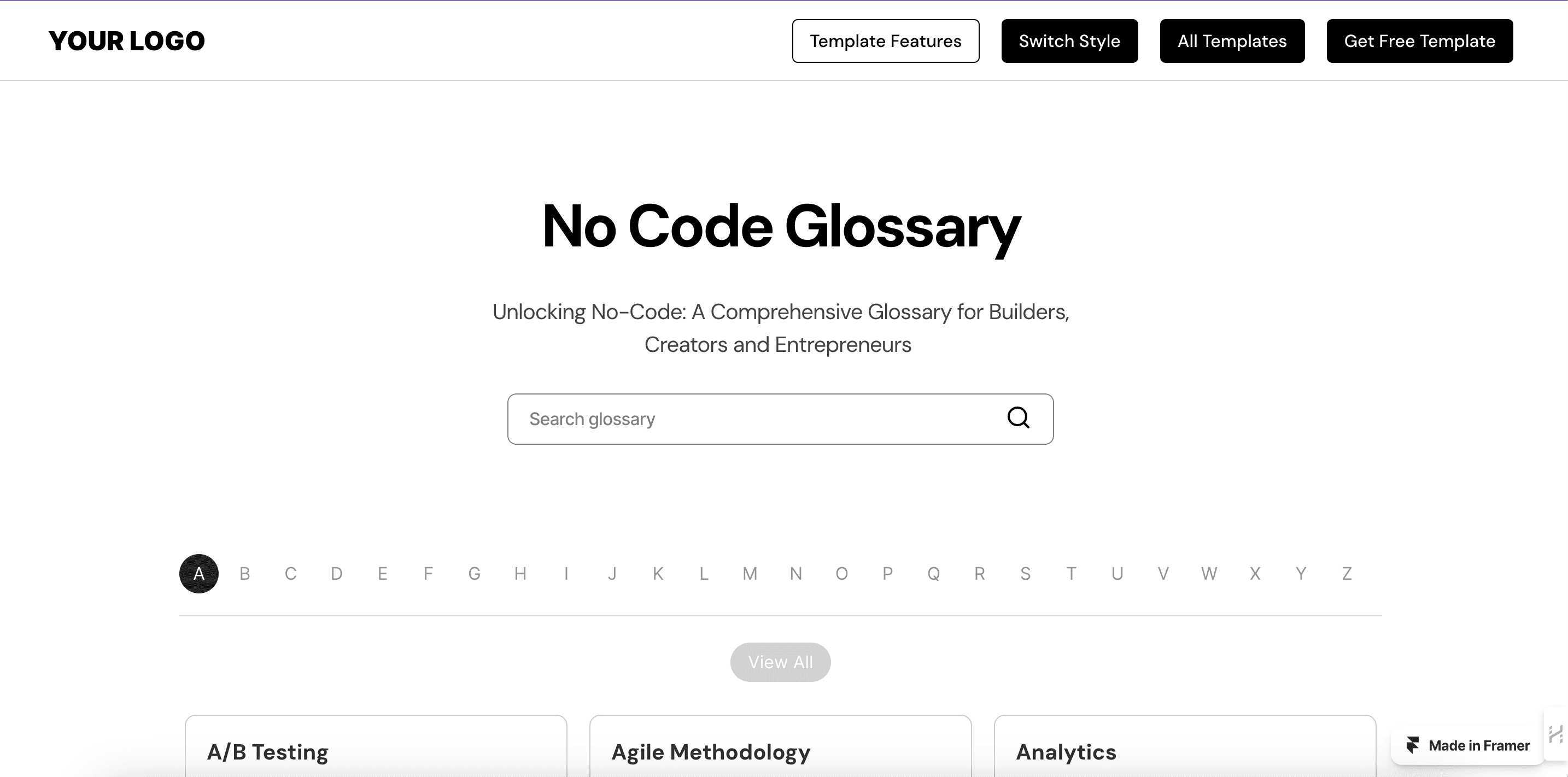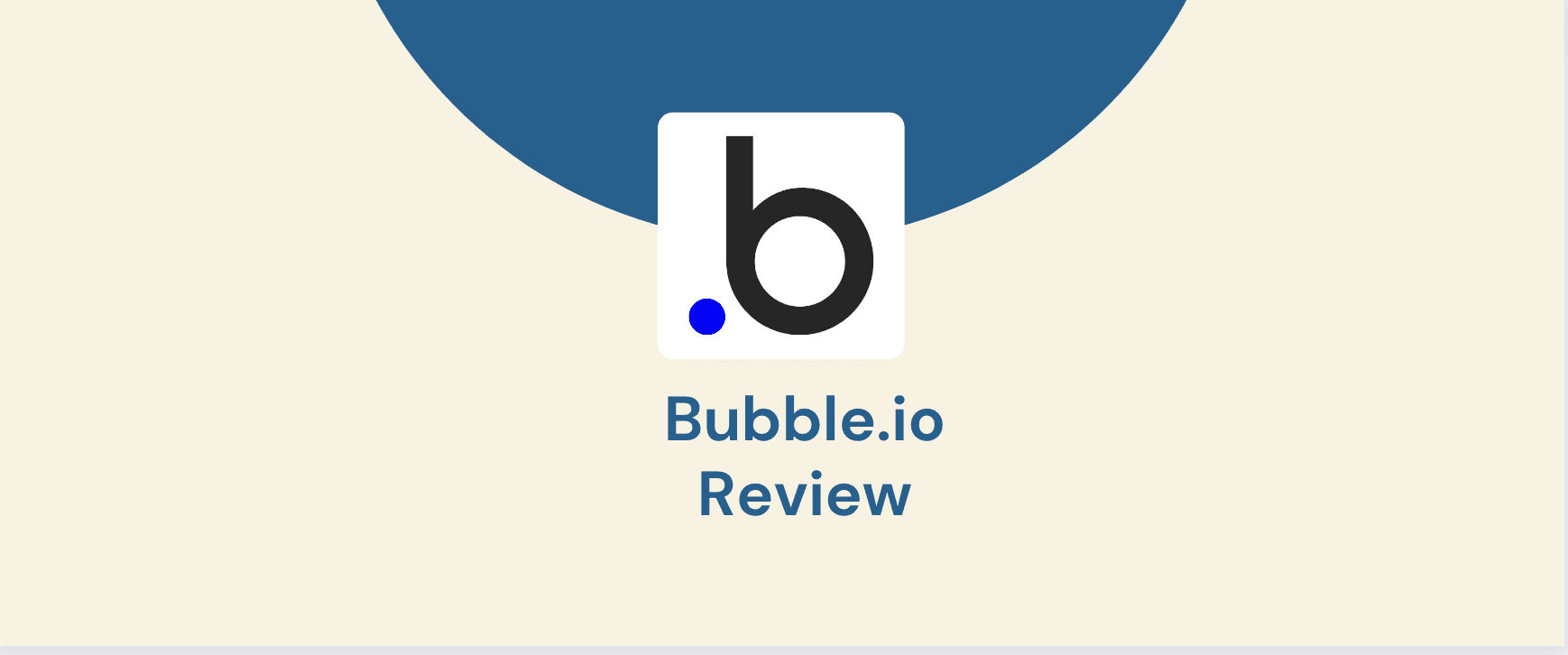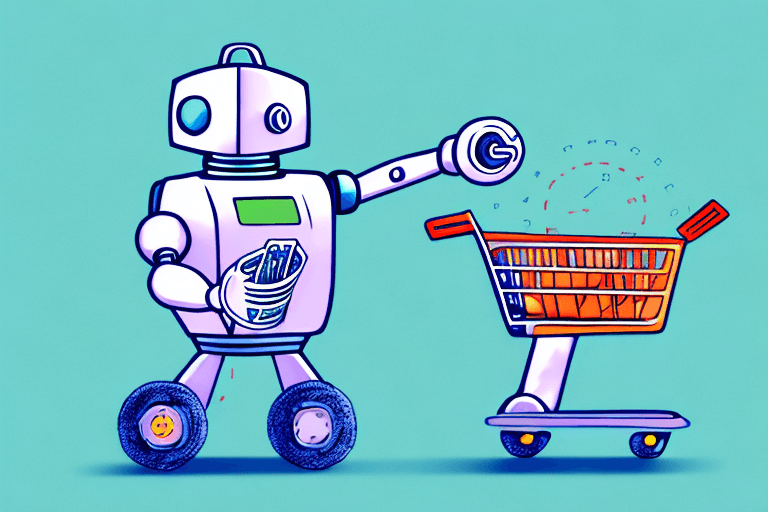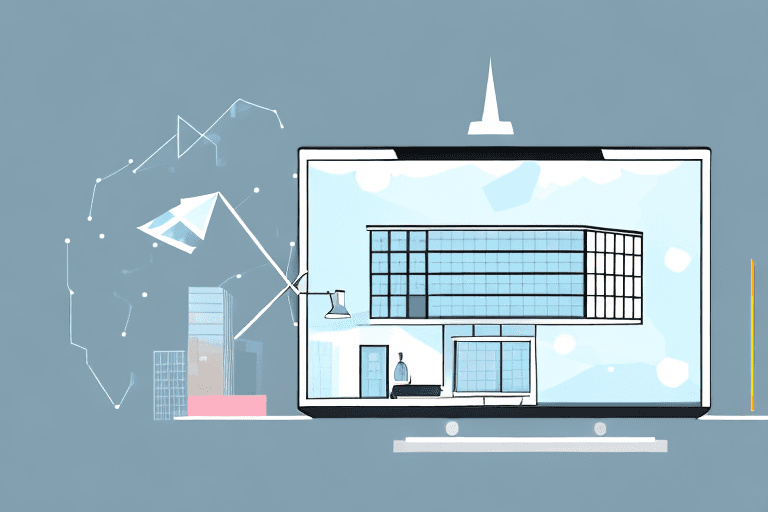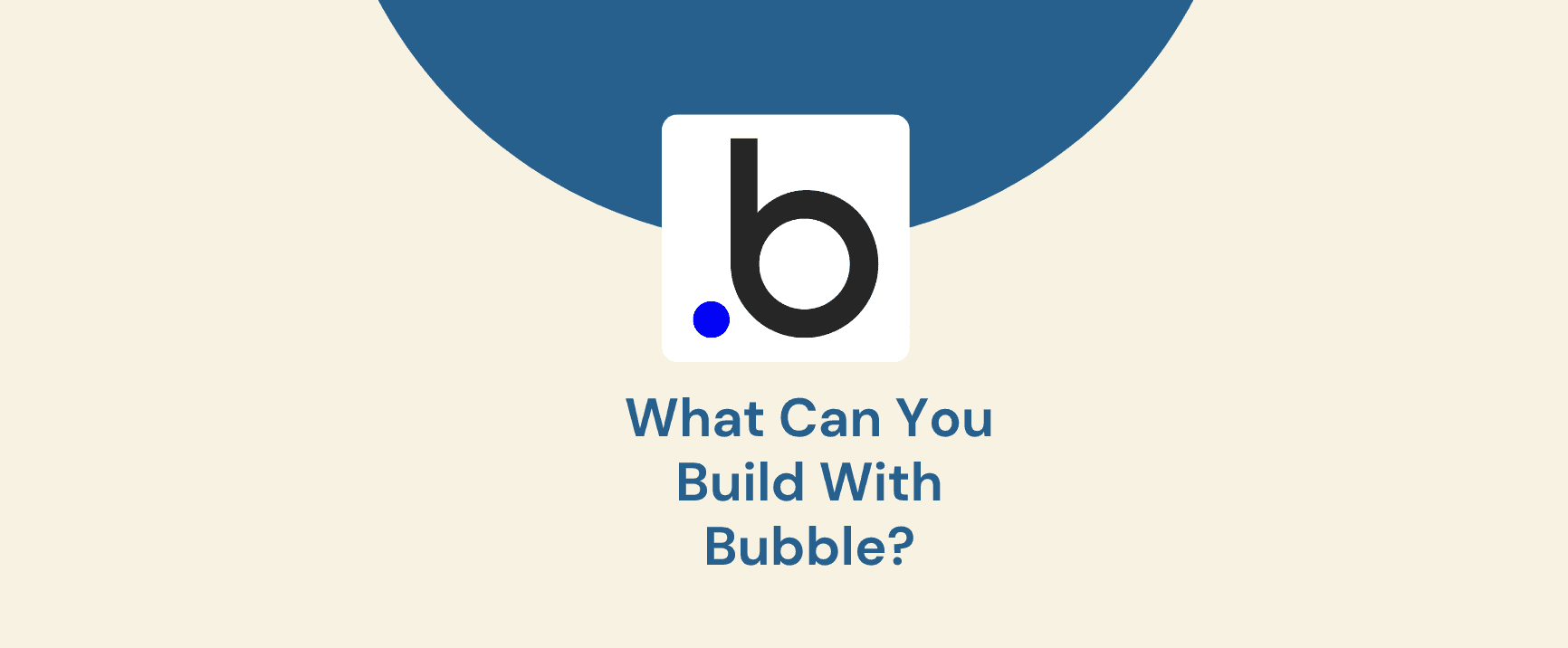User interfaces (UIs) that are visually appealing and functionally intuitive can give your product a significant edge. Framer, a powerful design and prototyping tool, empowers you to achieve just that. This comprehensive tutorial guides you through mastering Framer, from its foundational functionalities to advanced techniques.
Whether you're a seasoned designer or embarking on your UI/UX design journey, this in-depth exploration equips you with the knowledge to create stunning and interactive prototypes with ease. By the end, you'll be well-equipped to leverage Framer's potential to streamline your design workflow and elevate your creations.
Getting Started with Framer Tutorial
Before you begin, it's important to understand the basics of Framer. Here are the steps to get started:
Create a new project: Click on the "New Project" button in the top-left corner of the screen to create a new project. Choose a project name, select a template (if desired), and set the screen size and resolution.
Design your UI: Use the design canvas to create your user interface, including buttons, text boxes, and other elements. Use the various design tools (e.g. vector shapes, text tools, etc.) to create your UI.
Arrange components: Use the "Component" panel to arrange your elements on the design canvas. You can drag and drop components to move them around, and use the "Component" menu to resize and rotate them.
Add text and images: Use the "Text" and "Image" tools to add text and images to your design. You can adjust the properties of your text and images using the "Text" and "Image" panels.
Create a prototype: Once you have designed your UI, you can create a prototype by clicking on the "Prototype" button in the top-left corner of the screen. This will allow you to test your design and see how it looks and works.
Collaborate with others: Framer allows you to collaborate with others in real-time. Click on the "Collaborate" button in the top-left corner of the screen to invite others to work on your project.
Best Practices for Using Framer Layout
Here are some best practices for using Framer:
Create efficient and reusable designs: Use Framer's component-based system to create efficient and reusable designs. This will help you save time and reduce the risk of errors.
Optimize your designs for performance: Use Framer's performance tools to optimize your designs for speed and efficiency. This will help you create a better user experience.
Collaborate effectively with others: Use Framer's collaboration tools to work with others in real-time. This will help you save time and improve the quality of your designs.
Using Framer for Specific Purposes
Framer can be used for a variety of purposes, including designing mobile apps, web applications, and interactive experiences.
Here are some tips for using Framer for these specific purposes:
Designing mobile apps: Use Framer's built-in mobile app templates and tools to create stunning mobile app designs.
Designing web applications: Use Framer's built-in web application templates and tools to create stunning web application designs.
Designing interactive experiences: Use Framer's built-in interactive experience templates and tools to create stunning interactive experiences.
Latest Features and Updates to Framer
Framer is constantly evolving, and it offers a wide range of features and updates. Here are some of the latest features and updates to Framer:
New grid system: Framer's new grid system makes it easier to create consistent and harmonious designs.
Improved state management: Framer's improved state management allows you to create more complex and dynamic designs.
New integrations with other tools: Framer now integrates with other tools, such as Adobe XD and Sketch.
Framer AI: Framer now includes framer AI, which allows you to create intelligent designs that can adapt and respond to user input.
Enhanced collaboration features: Framer now offers enhanced collaboration features, making it easier to work with others on design projects.
Improved preview functionality: Framer's improved preview functionality allows you to see your designs in real-time, without the need for manual updating.
New design elements: Framer has added new design elements, such as customizable icons and templates, to its library.
Improved user interface: Framer's user interface has been improved to make it more intuitive and user-friendly.
Enhanced animations and transitions: Framer now offers enhanced animations and transitions, allowing you to create more engaging and interactive designs.
Better performance: Framer's improved performance ensures that your designs load quickly and run smoothly, even on complex projects.
Learning Framer
Framer is a powerful design tool that allows you to create interactive and animated designs for web and mobile apps. If you're interested in Learning Framer visit our page for a comprehensive guide, covering everything from basics to advanced techniques.
Here are some resources to get you started:
Framer Community Forum: The Framer community forum is a great place to ask questions, share knowledge, and connect with other Framer users.
Framer Documentation: Framer's documentation is a great resource for learning the tool. It covers all aspects of Framer, including its features, functionality, and best practices.
Framer Community: Joining the Framer community is a great way to connect with other Framer users, ask questions, and learn from their experiences. You can find the Framer community on Twitter, LinkedIn, and other social media platforms.
YouTube Tutorials: There are many YouTube tutorials available that cover various aspects of Framer. You can find tutorials on specific features, design techniques, and workflows.
Online Courses: There are several online courses available that cover Framer in depth. These courses are a great way to learn Framer at your own pace and get hands-on experience.
Practice: The best way to learn Framer is by practicing. Start by creating simple designs and gradually move on to more complex projects.
By following these resources and practicing regularly, you can become proficient in Framer and create amazing designs for web and mobile apps.
Framer Advanced Techniques
Once you have a good understanding of the basics of Framer, you can start exploring some of the more advanced techniques that the tool has to offer. Here are a few examples:
Utilizing the Grid System: Framer uses a powerful grid system that allows you to create complex layouts with ease. By using the grid, you can ensure that your designs are consistent and well-structured.
Creating Custom Components: Framer allows you to create custom components that can be used throughout your designs. This can save you time and help keep your designs consistent.
Using States and Transitions: Framer offers a wide range of states and transitions that you can use to create interactive and engaging designs. By using states and transitions, you can create designs that respond to user input and changes in the environment.
Integrating with Other Tools: Framer integrates with a wide range of other tools, such as Sketch, Figma, and Adobe XD. This allows you to import and export designs and prototypes seamlessly.
Collaborating with Others: Framer offers real-time collaboration, allowing multiple designers to work on the same project together. This can save you time and improve the overall quality of your designs.
Using the Timeline View: The timeline view in Framer allows you to see the order of your frames and how they will be displayed. This can be useful for creating animations and other interactive elements.
Using the Layers Panel: The layers panel in Framer allows you to organize your design elements and make changes quickly and easily. By using the layers panel, you can keep your designs organized and efficient.
Using the Symbols Panel: The symbols panel in Framer allows you to create and use symbols in your designs. By using symbols, you can save time and ensure consistency throughout your designs.
Using the Style Panel: The style panel in Framer allows you to create and apply styles to your design elements. By using styles, you can ensure consistency throughout your designs and make global changes quickly and easily.
Using the Preview Panel: The preview panel in Framer allows you to see how your designs will look on different devices and platforms. By using the preview panel, you can ensure that your designs are responsive and look great on any device.
Framer Tips and Tricks
Here are a few tips and tricks to help you get the most out of Framer:
Use the Grid System: Framer's grid system can help you to create more consistent and harmonious designs. Use the grid system to align your elements and create a clear structure for your design.
Use the Component Library: Framer's component library can help you to create more consistent and efficient designs. Use the component library to reuse elements throughout your ui design, and to create custom components that you can use again in the future.
Collaborate with Others: Framer allows you to collaborate with others in real-time. Use this feature to work with your team, and to get feedback on your designs.
Take Advantage of the Prototype Feature: Framer's prototype feature allows you to test your designs and see how they look and work. Use this feature to identify and fix any issues with your design, and to make sure that your design is functioning as intended.
Framer Advanced Features 101
In addition to the basic features, Framer also offers a number of advanced features that can help you to create more complex and sophisticated designs. Some of the advanced features in Framer include:
Animations and Transitions: Framer allows you to create animations and transitions that can help to bring your designs to life. You can use animations and transitions to create a sense of movement and flow, and to draw the user's attention to specific elements of your design.
Interactive Elements: Framer allows you to create interactive elements such as buttons, links, spacing and forms that can be used to collect user input and create a more dynamic user experience.
Conditional Logic: Framer's conditional logic feature allows you to create designs that can adapt and change based on user input or other factors. This can be useful for creating designs that are more responsive and personalized.
API Integration: Framer allows you to integrate your designs with external APIs, which can be useful for creating more complex and dynamic designs.
Best Framer Sites 2023
Here are some of the most beautiful sites built by Framer.
Donut Shop - Interactive Framer site for customizing donut combinations
Tella - Best Framer website for recording videos with a clean and minimalistic design
Jesus Amador - Framer site for creative design playground with large format for viewing intricate details
Elly Hsieh - Framer portfolio site showcasing design with clean and intuitive layout and visually striking design elements
Mars Rejects - Framer site that showcases unconventional and unique art with comic book-like interactive experience
Diana Lu - Framer website showcasing interaction designer's portfolio with clean and minimalistic design and animated transitions and hover effects
Pimpinella - Framer site for culinary arts with unique approach to foraging and pasta-making workshops and passion for food
VSK - Framer portfolio site for graphic designer with clean and minimalistic design and well-organized and easy to navigate
"How to Design Fonts?" by Blaze Type - Immersive Font Design Guide with user-friendly and easy to scroll layout and navigation and comprehensive content
ASH - Sleek Framer website for product designer's portfolio with visually stunning design, animations, and interactions that add depth and engagement.
These Framer sites are not only visually appealing but also showcase the designers' skills, creativity, and expertise in their respective fields. They provide a great source of inspiration for other designers and a glimpse into the latest design trends and techniques.
Most Beautiful Framer Templates
Here is the list of the most beautiful framer templates.
Agar: AI website template for building AI applications.
TrendBlend: Versatile AI template for AI-related businesses.
Zaply: Multi-layout SaaS template for seamless interactions and swift navigations.
Lawyer: Clean and professional template for law firms.
CRN Law Firm: Modern and sophisticated template for legal services.
Marker: Impressive template for design and marketing agencies.
SleekFolio: Stunning template for showcasing and monetizing creative endeavors.
Winder: Powerful SaaS template for sharing resources and knowledge through blog posts.
Creador: Template for Notion Creators with customizable layouts and pages.
At Eight: Comprehensive ecommerce template for driving sales and leaving a lasting impression.
Beauti: Versatile salon template for beauty salons, makeup studios, and more.
Vever: Vintage template for a bygone era with modern elegance and attention to detail.
Framer is a powerful and flexible design tool that can help you to create stunning designs and prototypes. With its intuitive interface, advanced features, and integrations with other tools, Framer is a great choice for designers of all skill levels. Whether you're just starting out or you're an experienced professional, Framer can help you to take your designs to the next level.
If you're looking to create stunning landing pages on Framer, we'd love to collaborate with you! As official experts and partners of Framer, we can help you design pages that load quickly, feature smooth animations, and are optimized for search engines. Just send us a message to get started!
Frequently Asked Questions (FAQs)
Is Framer free to use?
Framer offers a free plan that allows you to create unlimited projects and invite unlimited collaborators. However, the free plan has some limitations see Framer pricing here, such as a limited number of screens and a limited number of interactive elements.
Does Framer integrate with other design tools?
Yes, Framer integrates with a wide range of other design tools, including Adobe XD, Sketch, and InVision.
Can I use Framer to create responsive designs?
Yes, Framer allows you to create responsive designs that can adapt to different screen sizes and devices.
Does Framer offer any tutorials or resources to help me learn how to use the tool?
Yes, Framer offers a wide range of tutorials and resources beginners to help you learn how to use the tool, including video tutorials, documentation and information published in community forum.
Can I use Framer to create prototypes that can be tested on real devices?
Yes, Framer allows you to create prototypes that can be tested on real devices. You can use Framer's built-in preview mode to test your prototypes on your computer or mobile device.


